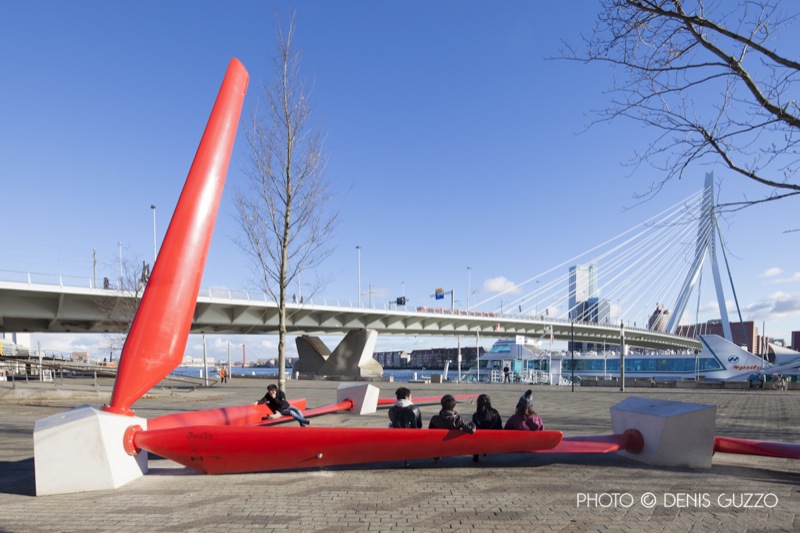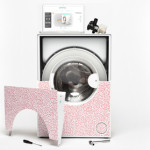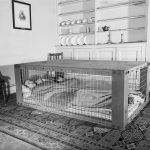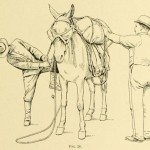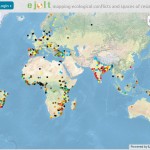Almost a quarter of a million windmills worldwide will need to be replaced by 2030. The rotor blades are made of valuable composite materials that are difficult to recover at the end of their energy generating life. New generation rotor blades made of glass or carbon fibre composite material have average lifespans of between 10 and 25 years. Recycling of glass fibre composite is possible though complex. Recycling of the more highly valued carbon fibre composite is currently impossible. In many EU countries landfill of carbon composites is now prohibited. Thus, many rotor blades at the end of their wind turbine life are currently shredded and incinerated. At current growth rates, by 2034, there will be about 225,000 tonnes of rotor blade composite material produced annually, worldwide.
The Dutch firm Superuse Studios has found a solution to the growing mountains of waste generated by the wind industry: making use of end-of-life rotor blades in design and architecture. The realised projects demonstrate the technical applications and potential for blade made designs and architecture. In their second life as design and architectural elements, rotor blades could be used for a further 50-100 years, or more. Blade made designs are durable, iconic, compete economically, and reduce the ecological footprint of projects in which they are used.
REwind Willemsplein
Public seating made from rotor blades was designed and installed for the Rotterdam municipality. The REwind public seating is located at Willemsplein, a public square at the foot of the well-known Erasmus bridge. The municipality was in need of durable, indestructible seating with iconic quality for people waiting to board harbour tour boats, but which could also be temporarily removed, when necessary, to make room for public events. Nine rotor blades from Friesland destined for incineration were used.
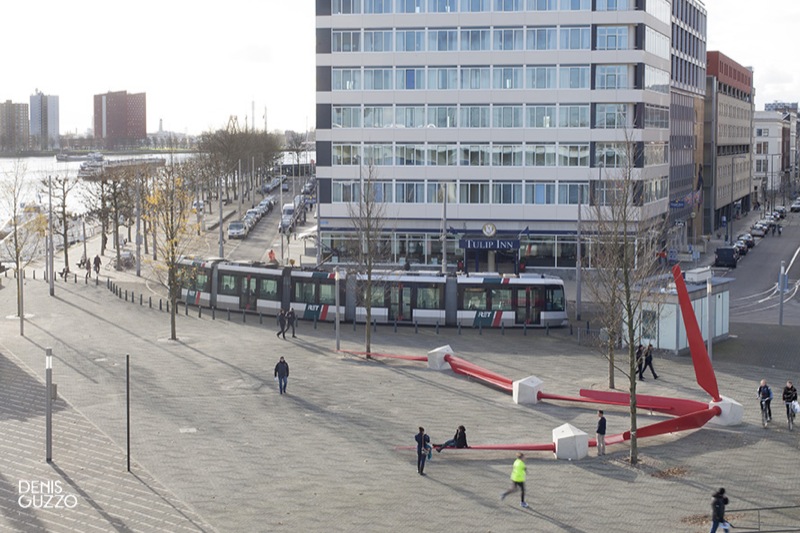 Public seating in Rotterdam. Picture by Denis Guzzo. More pictures.
Public seating in Rotterdam. Picture by Denis Guzzo. More pictures.
Five blades were used for seating, three as backrests, and one as place marker. By adjusting the angles and positions of the blades ergonomic public seating with a diversity of seating options was created. Seating depths vary from 30 to 80 cm, providing upright seating to more relaxed lounging options. The 6 metre long blades are attached with bolts to 1m3 concrete aggregate blocks made heavy enough to keep the lightweight blades in place. The aggregate is 100% recycled concrete rubble from Rotterdam.
Wikado Playground
The first Wikado built at the Meidoorn playground at Oude Noorden, Rotterdam, was built for the same budget as a comparable standard playground, and has an ecological footprint fifty times smaller. The playground was designed to maximise imaginative play, social interaction, and children driven game development. The inherent properties of rotor blades make this material an excellent choice: weather and wind resistant, organic, ergonomic shapes, and a strong and rigid structure. The cylindrical portion of 30 m long blades has a diameter of 1.4 m and makes for interior play spaces. One of the five 30 m blades was used intact. The remaining four blades were cut into three sections.
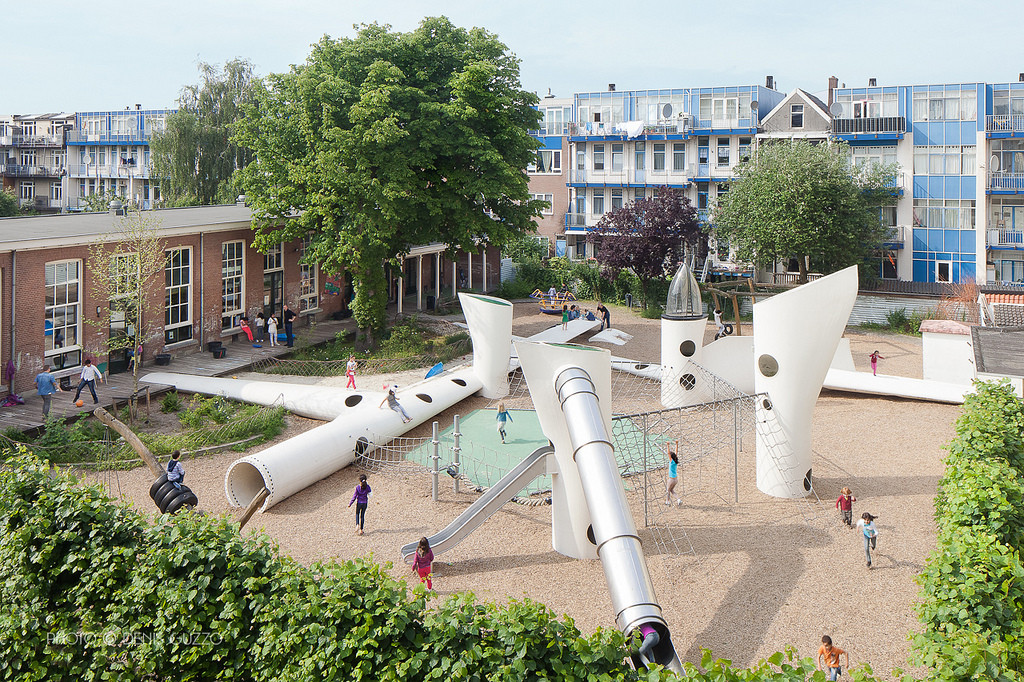 Playground in Rotterdam. Picture by Denis Guzzo. More pictures.
Playground in Rotterdam. Picture by Denis Guzzo. More pictures.
The four cylindrical end sections were transformed into play towers that stand around the central play zone. Each tower has a distinct and recognizable character. The ‘towerflat’ has three rooms with peeking holes, the ‘watchtower’ with a former F16 cockpit on top, the ‘water tower’ with hand pump for children to pump water for mixing with sand, and the ‘slide tower’ to which the original slippery sides from the site are attached.
REwind Almere
Construction is underway of the Superuse Studios’ designed shelters for the thousands of daily commuters to use the bus-train transfer station at Almere Poort. The durable and indestructible shelter design uses four 30m rotor blades. Waste rotor blades are easy to find in Almere, Holland’s #1 wind-energy region. Stacked in a Stonehenge like manner two 30 m blades are used to create a large shelter. Two of these large shelters are being built. The changing shape over the length of the blades gives a shelter roof that morphs into different shapes depending on the angle from which is it is viewed.
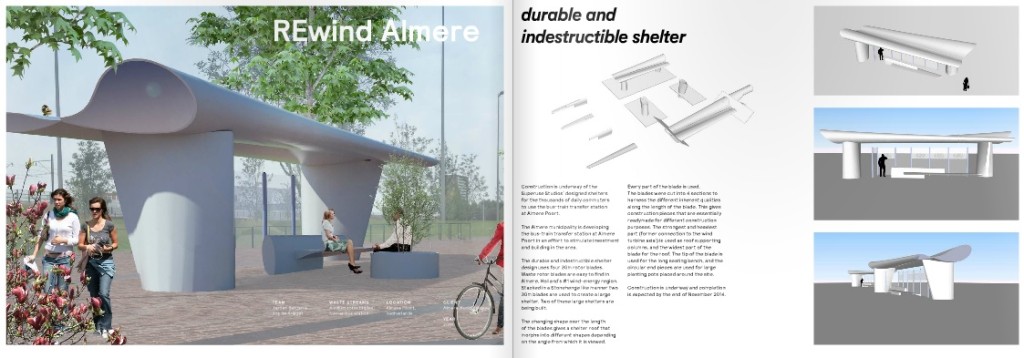 A bus shelter made from rotor blades. Source: Blade Made, Superuse Studios.
A bus shelter made from rotor blades. Source: Blade Made, Superuse Studios.
Every part of the blade is used. The blades were cut in four sections to harness the different inherent qualities along the length of the blade. This gives construction pieces that are essentitally readymade for different construction purposes. The strongest and heaviest part (former connection to the wind turbine axial) is used as roof supporting columns, and the widest part of the blade for the roof. The tip of the blade is used for the long seating bench, and the circular end pieces are used for large planting pots placed around the site. Completion is expected by the end of March 2014.
Future Plans
Superuse Studios has been invited to partner with the Danish ‘Genvind Consortium‘, a consortium of over 20 organisations, including Vestas, the biggest wind turbine producer of the world. The main goal of this consortium is to find solutions to the growing mountains of waste generated by the wind industry. Superuse Studios have joined the Genvind project to demonstrate how worldwide blade made projects that reuse wind rotor blades can play an important role in the processing of this composite material. The collaboration already resulted in very concrete plans for a blade made bridge in Denmark.
Thanks to Tim Joye.
